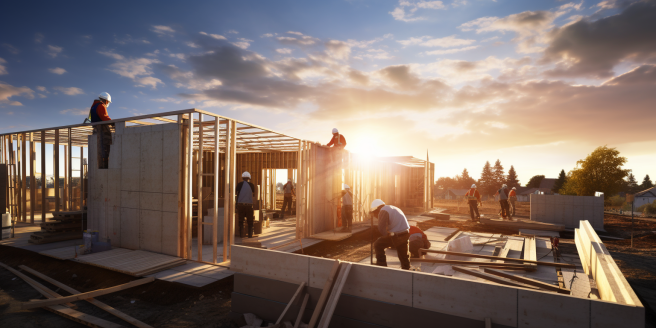In the realm of affordable housing, innovation isn’t just a buzzword—it’s a lifeline to millions who struggle to find safe, secure, and affordable homes. New construction techniques, materials, and policies are helping to reduce costs and increase access to housing for low- and moderate-income individuals and families. Let’s dive into some of the significant advances that are reshaping the affordable housing landscape.
The Rise of Modular and Prefabricated Homes
Modular and prefabricated homes have emerged as frontrunners in the affordable housing scene due to their reduced construction time and potential cost savings. These homes are partially or entirely built offsite in controlled factory environments before being transported and assembled at the final location. This approach minimizes construction waste, reduces on-site labor and material costs, and speeds up the housing delivery process, all of which contribute to more affordable end prices. As manufacturers refine production techniques and scale up operations, we can expect modular and prefabricated homes to become an increasingly common sight.
New Materials Advancing Sustainable Building
The use of innovative materials in construction can have a lasting impact on the affordability and sustainability of housing. Researchers and companies are developing materials like bamboo, which grows quickly and is highly renewable, or materials such as recycled plastic bricks, which repurpose waste into durable building components. These materials are not only environmentally friendly but can also be more cost-effective than traditional options. The challenge lies in scaling up production and gaining widespread acceptance within the construction industry, a process that also includes navigating building codes and standards that may not yet accommodate these new materials.
Cost-Effective Building Techniques for Low-Income Housing
Efficient design and construction techniques play a vital role in developing low-income housing solutions. Simple, repeatable designs that use standard dimensions and require fewer specialized skills during construction can help control costs. Additionally, economies of scale can be achieved by building multiple units simultaneously. Employing local labor and materials also keeps the investment within the community, potentially lowering expenses and fostering local economic growth. By focusing on smart design and construction efficiencies, developers can create more housing units within tight budget constraints.
Incorporating Green Technologies to Reduce Long-Term Costs
Green technologies such as solar panels, energy-efficient appliances, and water-saving fixtures can initially be more expensive, but they provide long-term cost savings for residents by reducing monthly utility bills. Moreover, these technologies lessen the environmental footprint of the housing units. Initial costs can be offset through government incentives, non-profit grants, and innovative financing strategies that prioritize long-term sustainability. By investing in these technologies during the construction phase, future maintenance and operating costs are significantly reduced, making housing more affordable in the long run.
Policy Measures Driving Innovation in Affordable Housing
Public policy shapes the housing market in numerous ways, from zoning regulations to subsidy programs. Governments have the power to incentivize or even directly support innovative construction methods and materials through tax breaks, grants, or low-interest loans for projects that demonstrate cost-effectiveness and sustainability. Furthermore, revised building codes and updated land-use policies can facilitate the construction of alternative housing types, such as tiny homes or co-housing communities. Strong leadership and well-designed policies are essential for fostering environments where innovation in affordable housing can thrive.
In our journey to realize the dream of decent, affordable housing for all, staying abreast of these innovations and actively advocating for supportive policies is crucial. By embracing new technologies, materials, and policy frameworks, we can help build a more stable future for those in need.



